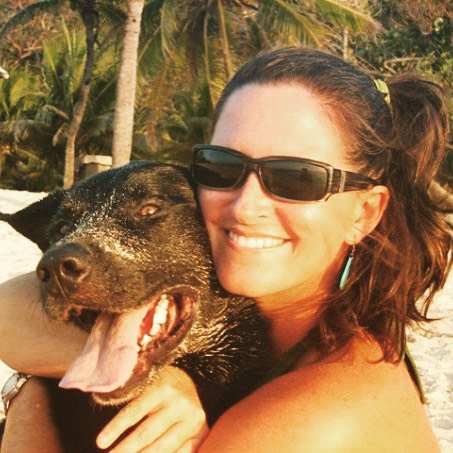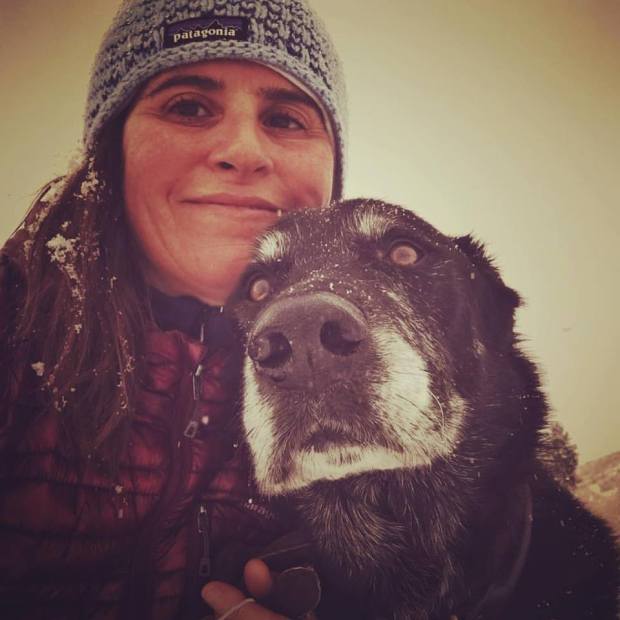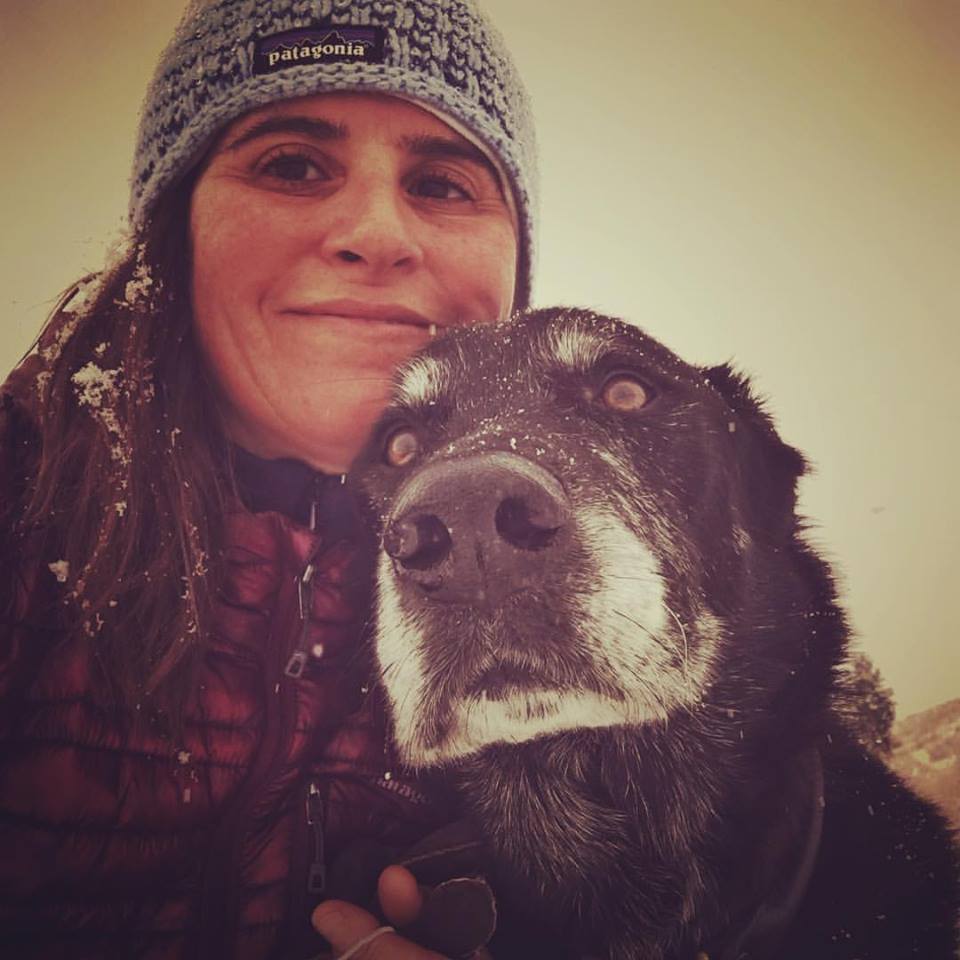Today is my 15th anniversary with Missoula. We’ve broken up a few times, and have even gone so far as to say “I am so done with you.” We’ve stormed off, slammed doors, and pouted. But either I can’t stay away or she lures me back. Or both. It’s hard to say. My returns have been with joy, but more often than not the moves have been slightly more by default than by choice. When I returned this time, for round four, it was an intentional choice though I had no idea how good it would be or how right it would feel. I assumed I’d live here as I always did, with one foot inching out the door.
Fifteen years ago I was in the process of getting divorced. The marriage was over, but Massachusetts requires a ninety-day waiting period before inking the final signatures, so I decided that instead of restarting my life, I’d put myself on ice (literally, in this case) in Missoula, Montana. So on the morning of New Year’s Eve 2000 I flew with two duffel bags to this faraway town to be with a boy I knew from a faraway time.
I felt old at twenty-six. I’d worked in investment banking and then, despite my success, quit to go back to school to be a Montessori teacher. Then I quit that and worked in development at a private school. I’d gotten married, moved back across the country, and remodeled a hundred-year-old house. I had a good life, but it wasn’t what I wanted. I didn’t know what I wanted, which is why I quit everything. What I really wanted was to reclaim my twenties, and what better place to do that than Missoula, Montana, which, as a friend’s father once said, “is like a retirement community for thirty year olds.” He was kidding, but he was right.
Missoula is a good place to be young and an even better place to stay young. This is the delightful double-edged blade of this place, and it begs the seemingly unanswerable questions: Can we stay here and grow up? What does it mean to grow up? Do we have to? Are we supposed to? Can the answer just grow and change along with us? Do we have to….?
These are the kinds of questions I asked myself incessantly for a dozen years, thinking the answer would appear in neon or flown behind a blimp or—worst-case-scenario—in a dream. There was no such luck, but what I got was even better: the wisdom to stop asking.
It’s generous to say I do my due diligence, but it’s more honest to say I tend toward overanalyzing, overthinking, overquestioning. To outsiders it might appear I make impulsive decisions, but that’s only because my debating occurs deep in my gut, the place where the answers already live.
I’m one of those annoying people who claim “no regrets” even when dangling from a cliff or sleeping in a laundry room or after hitting an elk on a cell-phone-free back road in Colorado. I claim to love all of these messy bits and with optimism and forward-thinking declare them “part of the process” and “making me who I am” and “growth opportunities.” It’s true, I do feel that way, but there’s this other part of me that’s often asked myself why I’ve had to make everything so damn hard. A concrete answer to this continues to elude me, but that’s okay because for the most part I’ve stopped making things hard. The answer is not in the questioning; it’s in the listening.
Following extensive error in this department I’ve learned to pay closer attention to my gut. As my friend Soph and I say, “We took that class and passed.”
Passing the class (and there are many classes…) doesn’t mean that you don’t have to sometimes go back and look over your notes. Maybe you aced the class on the first shot, or maybe you had to retake it a few times. Maybe you retook it and then aced it. Perhaps it’s wise to go back and read your own thesis—surely packed with wisdom that can never be unlearned, though there are plenty of things in life—patterns, for example, and habits that no longer serve us—that can, and dare I say should, be unlearned.
These past six months I’ve done a lot of work with my Osteopath to repair some old injuries, and in the process of healing the physical we’ve had to do some emotional work because one cannot be separated from the other. My Osteopath is Matt, and I’ve had some intense moments in his office. I’ve laughed, I’ve cried, and I’ve laughed and cried at the same time, but every time I leave his office I feel more connected to myself, more sure of my path, less inclined to question myself into a corner.
Matt does osteopathic manipulations and cranial sacral, but of the therapies he uses BodyTalk is by far my favorite. This is not a scientific explanation, but for those who don’t know, BodyTalk reconnects lines of communication in the body thus enabling the body to resynchronize. It’s kind of like rebooting the body or, in extreme cases, reinstalling the software and starting over. It feels like magic, but it’s based on science.
Although I’m a proponent of talk therapy, sometimes we just get talked out. More than that our brains take over and give the “correct” answers or the answers that we want to be correct, but in BodyTalk the body gives the information and tells the brain it can take its overthinking, rationalizing, and bargaining and buy it a one-way Greyhound ticket. Of the findings that have come about during my BodyTalk sessions, these are some of my favorites:
- I’m allergic to schedules and to worry.
- I can allow more sweetness into my life, but sugar is not my friend.
- I’ll meet the man of my dreams before I stabilize my sacroiliac joint (he’s funny, too).
One of the first things Matt told me was that I’ve suffered from a broken heart, and I was all “yeah, who hasn’t.” It reminded me of the time the animal communicator told me Lucky would like more steak, but like the time with the animal communicator (who upped the ante and her credibility when she told me Lucky also appreciates the yoghurt I give to him) Matt clarified and told me that the broken heart was from when I was four. Matt had no way of knowing this, but I was four years old when my parents got divorced. It’s impossible for a child not to be broken hearted when her parents split, though in my case I’m quite sure I held onto that heartbreak far too long—well into adulthood—but as Matt reminded me, “…that is not your heartbreak story.” He’s completely right, though it’s often challenging to know where our stories begin and end, tough to draw clear lines between ours and other people’s stories.
I went into Matt’s office one morning in November bundled up. I grumbled and did my scrunchy nose thing as I dehatted and unwound my scarf and unzippered myself out of my sleeping-bag-like coat. I undid the laces on my tall snowboots with frozen fingers and, after pulling my sweater over my head, fussed with the static that was on everything. I sighed. He smiled.
I told Matt that I missed the ease of running out of the house in flipflops and that I hated the dark that got darker every day. “Winter is not my thing,” I fessed and he said we could fix that. I suggested he might not set himself up for failure like that, but he was confident. After the initial adjustments we settled in for a few minutes of BodyTalk.
“It’s not winter or the dark,” Matt said, “It’s a fear of restriction, of not being able to move.” I thought about what he said and felt the tightening in my hips and shoulders just thinking about being held back in any way. He was right; it wasn’t winter.
One of my favorite things about living in Missoula is being able to hike the hills around town every day. In winter it’s harder not because of the weather—I have the right coats and boots—but because of limited hours of daylight. It actually makes me mad. Winter takes one thing that I love and that makes me happy and removes it. In addition, winter makes travel harder, and even though I love this little valley where I live, I always like to have one eye on the door just in case. I like an exit strategy.
But just because these things are hard does not in any way make them impossible; it just requires more planning. It means I might have to prepare my lunch early and then squeeze in a hike when I’d typically be having lunch and getting ready for work. It means that I might not be able to get on the highway and drive myself three easy hours to a change of scenery, but I can sure book a plane ticket.
The solution suddenly seemed simple: I made a promise to get out on the hills every day with Lucky even if it’s just twenty minutes at dusk and I booked a plane ticket to visit friends in California. I’m quite sure my change of attitude—in seeing the solution to winter, not the complication—is the BodyTalk, though it could be surely be written off as a fluke or a coincidence. But I haven’t hated winter yet. In fact, I’m loving it. I’m grateful for cozy nights at home and early bedtimes, for this wintertime of recharging from summer, because as much as summer is my season it always leaves me slightly exhausted with all of those endless days and long, bright nights. I wouldn’t be surprised if next summer I start longing for a little bit of winter…
It appears there has been a major shift.
On my December TODO list was to renew my passport. It had also been on October’s and November’s lists, but I’d put it off because I wasn’t keen on the concept of being without my freedom pass for four-six weeks (despite having zero plans for international travel), but with the clock ticking I got over myself and rectified my aversion of restriction because being without a passport for a few weeks is not the end of the world, but simply a requirement every ten years. Matt and I have worked on the distinction between what is really a big deal and what is just something that is, something we can feel neutral about because it falls into the realm of what we can’t control.
By the very nature of the validity period, each decade of a person’s life is marked by the process of turning in an expiring passport in exchange for another. I was thirty one when I got my last passport, and just starting to work out some of my place-related kinks. I’d expedited that renewal so I could go on a trip to Honduras, because a woman who wanted me to work for her needed me there ASAP. Because it was February in Montana and my dog had been playing with tin cans in the ice-encrusted alley while I slept too late, I said “sure,” although I’ve since learned that when someone says “jump” it’s never wise to ask “how high” or “how fast.” That passport reminded me not only of why I wanted to go to Honduras and what experience I longed for (I lived there for just over a year), but also of the circumstances driving my choices and how the grip I had on my wheel was so loose I might as well have been steering with one knee. Or not steering at all.
I carried that passport for ten years though I often thought of replacing it because I never liked the picture. I’d prefer to say it’s because I look downright terrified, but it’s also because my hair was flat and it only occurred to me retroactively that I could have used a little color on my cheeks. The collar on my coat stood awkward and sharp and inside it my neck looked thick and stiff. My eyes looked creepy and terrified—open yet dark—and my entire self looked as if bracing for a crash, which in many ways I suppose I was. Soph and I refer to the passport pictures of our thirties as the ones that represent “The Revolution,” something we had to go through but nothing we’d willingly return to.
My previous picture, taken when I was twenty-one, was amazing. I carried that passport around instead of my driver’s license claiming it was easier, but honestly I just wanted the physical evidence of how good I looked on that one day in March 1995 when I was twenty-one years old and just happened to have a killer suntan on the day my mother took me to get my passport renewed. I may or may not have just gotten off a plane from Florida, and was wearing a creamy, white, Irish-knit sweater and pearl earrings and my sun-kissed face looked airbrushed and my eyes were completely wide open yet lacking that hideous deer-in-the-headlights look. There was plenty to be wary of then, but I dwelled securely in that lovely ignorance-is-bliss space of young adulthood.
The truth is, I hydroplaned through my twenties, hoping a wheel might touch down before I crashed or spun completely out of control. That passport represented youthful innocence and naiveté. If I was sad to send it in for renewal I was equally delighted to turn in the one from “The Revolution,” the decade of questionable choices that I’ve since declared an official end to.
When I went to get my forty-one-year-old picture taken I made a mature choice to go as myself though I took a few basic precautions like showering, brushing my hair, and remembering that a little bronzer goes a long way in December. Though I rarely do these days, I wore my pearl earrings only as a throwback to twenty years ago, not because I was hoping for a miracle. I’m might be optimistic but I’m also quite realistic.
Standing among the office supplies at FedEx Kinko’s is not the best place for a glamour shot. The guy pulled down the white screen in front of binders and presentation materials and positioned me under the unforgiving fluorescent lights. Then, contrary to most photos taken in the history of forever, instructed me to not smile.
The clerk said we “nailed it” on the first shot and he let me take the briefest glance on the small screen before he went to the printer. I cringed opening the tiny folder, and was initially unimpressed. It might have been the light, but if I really have dark circles under my eyes I wish someone would drop some concealer in my mailbox or at least send me an Amazon link so I can set myself straight.
I am, however, pleased to say that my neck looks really good in the picture. An Italian man told once told me that you can tell a woman’s age by her neck, and he said my neck was incredibly youthful and shaved at least seven years off my actual age. I thought of him when I saw how damn good my neck looks in my new passport picture, so good I might give up my beloved scarves. I’m quite certain that by the time this passport is up for renewal I’ll be clinging to the picture as the next decade begins. It’s not that the picture will get better, but by the time I’m fifty one I’ll probably be in absolute awe of the things I hated about my face when I was forty one.
My eyes themselves also look good, and by good I mean they look normal. The whites of my eyes look healthy and white, but more than that they look calm. I don’t look like a woman who’s running either toward or away, but like a woman who is content right where she is. Oh, and I got my new passport in a measly two weeks. The anticipation of the wait was the hardest part.
Here’s Lucky and I together on the beach in Honduras in 2006, and just a few weeks ago hiking on our hill on a snowy December day.


